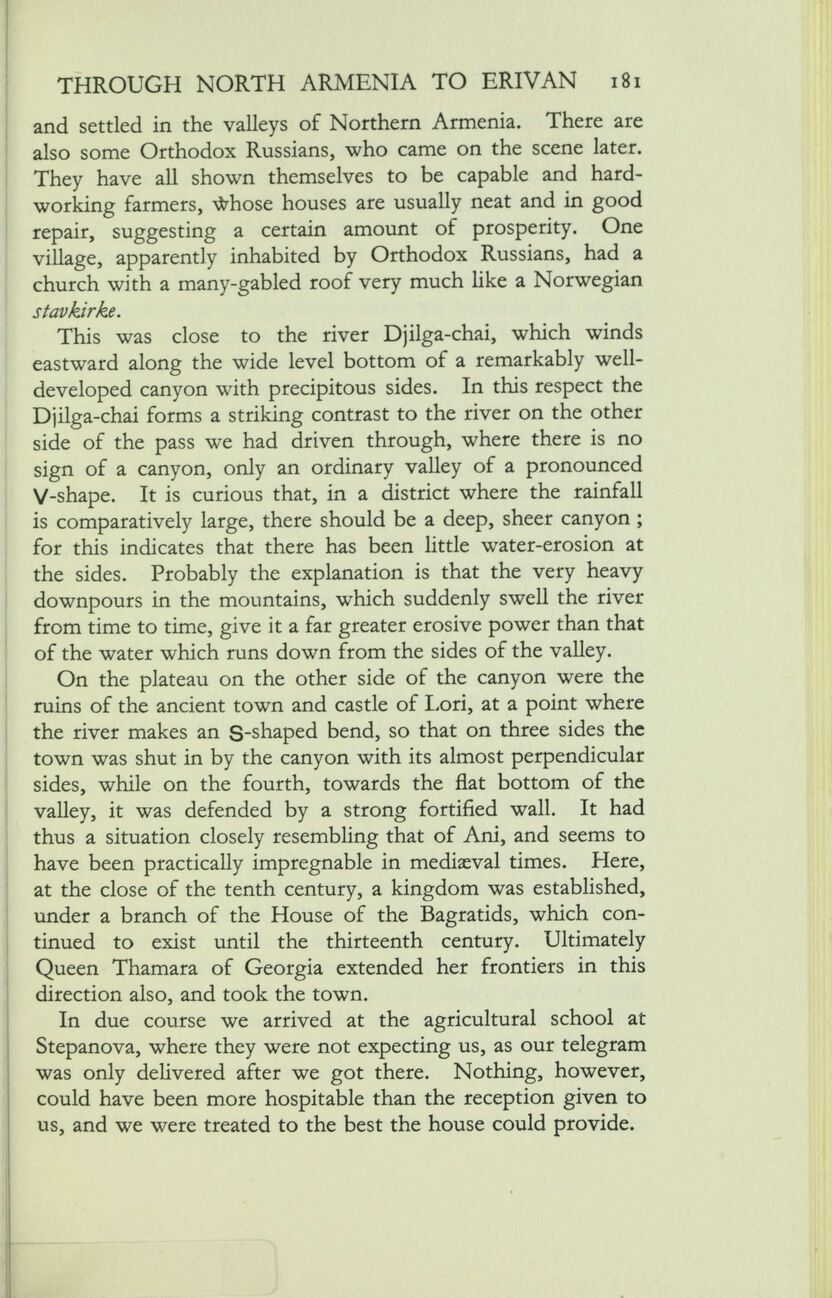
Full resolution (JPEG) - On this page / på denna sida - VIII. Through north Armenia to Erivan

<< prev. page << föreg. sida << >> nästa sida >> next page >>
Below is the raw OCR text
from the above scanned image.
Do you see an error? Proofread the page now!
Här nedan syns maskintolkade texten från faksimilbilden ovan.
Ser du något fel? Korrekturläs sidan nu!
This page has never been proofread. / Denna sida har aldrig korrekturlästs.
THROUGH NORTH ARMENIA TO ERIVAN 181
and settled in the valleys of Northern Armenia. There are
also some Orthodox Russians, who came on the scene later.
They have all shown themselves to be capable and hard
working farmers, whose houses are usually neat and in good
repair, suggesting a certain amount of prosperity. One
village, apparently inhabited by Orthodox Russians, had a
church with a many-gabled roof very much like a Norwegian
stavkirke.
This was close to the river Djilga-chai, which winds
eastward along the wide level bottom of a remarkably well
developed canyon with precipitous sides. In this respect the
Djilga-chai forms a striking contrast to the river on the other
side of the pass wc had driven through, where there is no
sign of a canyon, only an ordinary valley of a pronounced
V-shape. It is curious that, in a district where the rainfall
is comparatively large, there should be a deep, sheer canyon ;
for this indicates that there has been little water-erosion at
the sides. Probably the explanation is that the very heavy
downpours in the mountains, which suddenly swell the river
from time to time, give it a far greater erosive power than that
of the water which runs down from the sides of the valley.
On the plateau on the other side of the canyon were the
ruins of the ancient town and castle of Lori, at a point where
the river måkes an S-shaped bend, so that on three sides the
town was shut in by the canyon with its almost perpendicular
sides, while on the fourth, towards the flat bottom of the
valley, it was defended by a strong fortified wall. It had
thus a situation closely resembling that of Ani, and seems to
have been practically impregnable in mediæval times. Here,
at the close of the tenth century, a kingdom was established,
under a branch of the House of the Bagratids, which con
tinued to exist until the thirteenth century. Ultimately
Queen Thamara of Georgia extended her frontiers in this
direction also, and took the town.
In due course wc arrived at the agricultural school at
Stepanova, where they were not expecting us, as our telegram
was only delivered after wc got there. Nothing, however,
could have been more hospitable than the reception given to
us, and wc were treated to the best the house could provide.
<< prev. page << föreg. sida << >> nästa sida >> next page >>